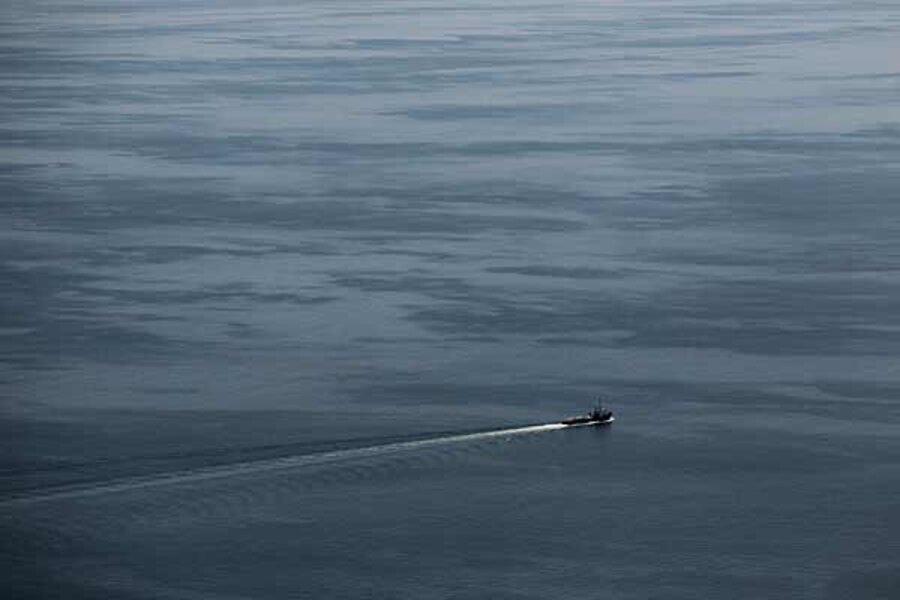BP report on cause of Gulf oil spill spreads the blame
The Deepwater Horizon oil well blowout that killed 11 men and resulted in the largest oil spill in US history was the result of a series of human and mechanical failures by "multiple companies and work teams," including the companies' own representatives, according to a report by BP released Wednesday.
The failures contributed to an accident in the Gulf of Mexico that, BP says, was caused by "a complex and interlinked series of mechanical failures, human judgments, engineering design, operational implementation and team interfaces," the report said.
IN PICTURES: Louisiana oil spill
The 193-page report, not counting hundreds of pages of appendices, was based on BP's own internal investigation. It cites a sequence of critical failures by its own staff, as well as rig operator Transocean and the cementing company Halliburton. They include the following:
- Faulty cement and other barriers "at the bottom of the Macondo well that failed to contain hydrocarbons within the reservoir, as they were designed to do, and allowed gas and liquids to flow up the production casing."
- Incorrect evaluation of negative pressure test results by BP and Transocean representatives, though "well integrity" had not been fully established at that point.
- A critical 40-minute period during which the Transocean rig crew – the operator of the Deepwater Horizon rig – "failed to recognize and act on the influx of hydrocarbons into the well until the hydrocarbons were in the riser and rapidly flowing to the surface."
- After the gushing oil and gas mixture reached the rig, a routing of that flow to a mud-gas separator, "causing gas to be vented directly on to the rig rather than being diverted overboard."
- A flow of natural gas into the engine rooms through the ventilation system. This created a cloud ripe for ignition that the rig’s fire and gas system did not prevent.
- Failure of the rig’s massive blowout preventer on the sea floor to automatically seal the well, "probably because critical components were not working."
The four-month investigation that undergirded the report was conducted by Mark Bly, BP's head of safety and operations, who headed a team of specialists.
The report – which also offered 25 recommendations for improving deepwater oil drilling practices – was nevertheless hampered in arriving at any definitive conclusions in some areas because key evidence was not available to BP itself. The blowout preventer, for instance, was only raised from the ocean bottom over the weekend.
But BP's outgoing chief Tony Hayward said the investigation clearly showed BP was not solely responsible and that "multiple parties, including BP, Halliburton, and Transocean, were involved."
"The investigation report provides critical new information on the causes of this terrible accident," Mr. Hayward said in a statement. "It is evident that a series of complex events, rather than a single mistake or failure, led to the tragedy."
The report is in line with BP's longstanding contention that some blame should be shouldered by other parties involved in the exploratory well.
“We have said from the beginning that the explosion on the Deepwater Horizon was a shared responsibility among many entities," BP’s incoming chief executive Bob Dudley said in a statement.
While it is the first comprehensive report on the blowout to emerge from a company close to the tragedy, it will not be the last word. Two of the oil giant's partners in the drilling operation – Transocean and Halliburton – have yet to weigh in. President Obama's investigative commission, as well as a Department of Interior-US Coast Guard panel, have yet to deliver their findings.
A finding that multiple causes and events combined to create disaster was not surpising to drilling experts, who noted that it appeared to downplay BP's overriding role as operator and principal developer. Critical decisions on pressure tests and cement testing and cement type and monitoring - all were in BP's court, they say.
"They're trying to share the blame," says Dan Albers, a consulting petroleum engineer with decades of experience in offshore drilling familiar with the report. "To a degree there's some truth in that. Transocean can be blamed somewhat. Halliburton comes in for some blame. But ultimately it's BP calling the shots."
Even if Halliburton, for instance, had selected a nitrogen-based cement that was "totally inappropriate," Albers says, "any engineer worth his salt would never in a hundred years have allowed the type of cement to be used."
Environmentalists said the report did not go far enough and appeared to be primarily an attempt by the company to deflect blame from itself through technical arguments – without looking at overarching vulnerabilities in the development process.
“This accident can not be reduced to technical and human errors," Kieran Suckling, executive director of the Center for Biological Diversity said in a statement. "It was caused by a deep flaw in America’s oil drilling system which allowed BP to lease and drill for oil with no environmental review, no safety measures to protected imperiled wildlife, no meaningful spill cleanup plan."
Richard Charter, an offshore drilling specialist with Defenders of Wildlife who has analyzed multiple blowouts since the Santa Barbara spill in 1969, said the report raised larger unanswered questions about the need for better government accountability.
"The take-home message from today's report is that the BP disaster was not only preventable but predictable given previous accidents and blowouts seen in this industry – and knowing that the federal agency involved was taking shortcuts and allowing these companies to self-regulate," he said. "You can't let the fox guard the henhouse."





